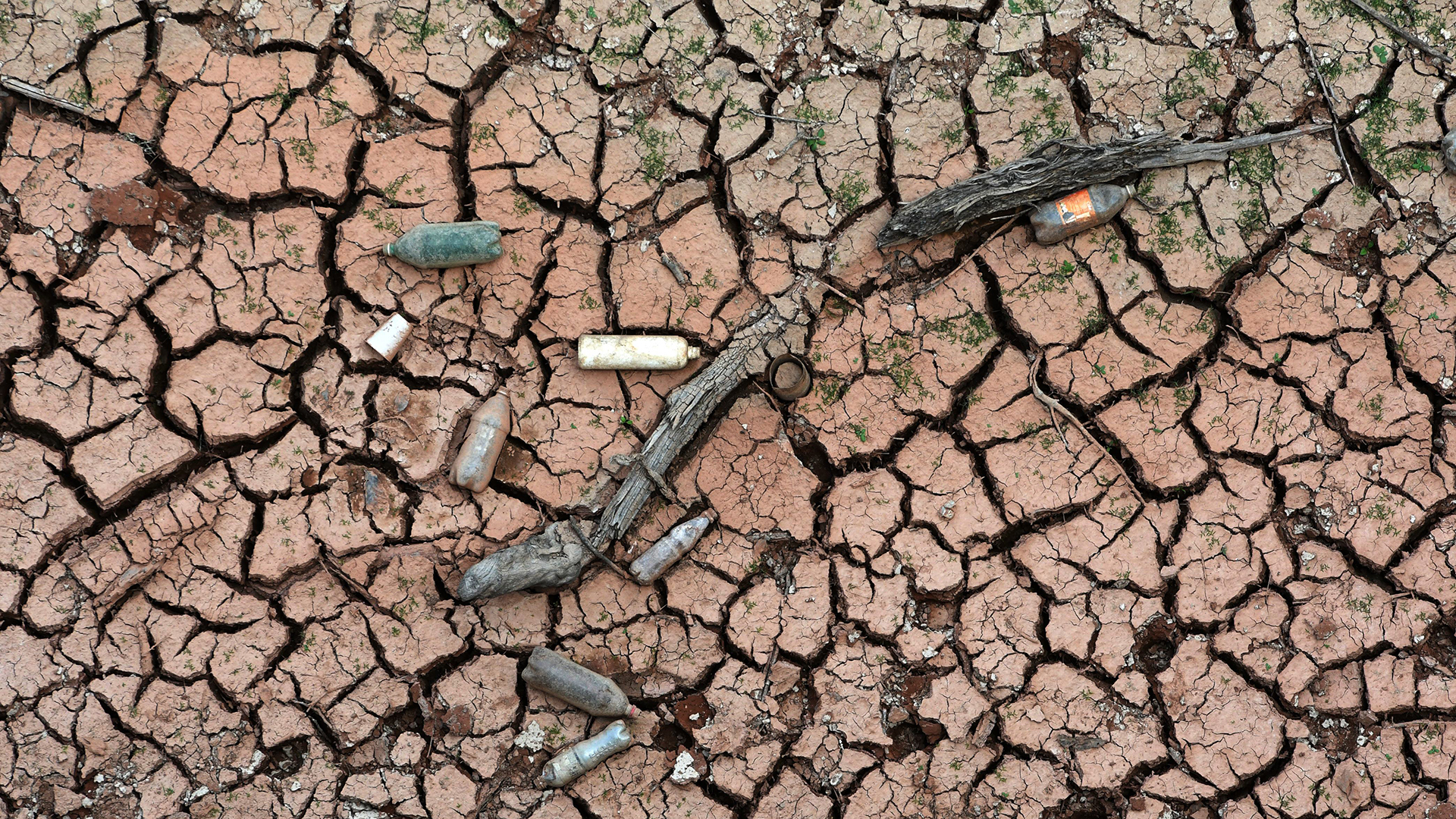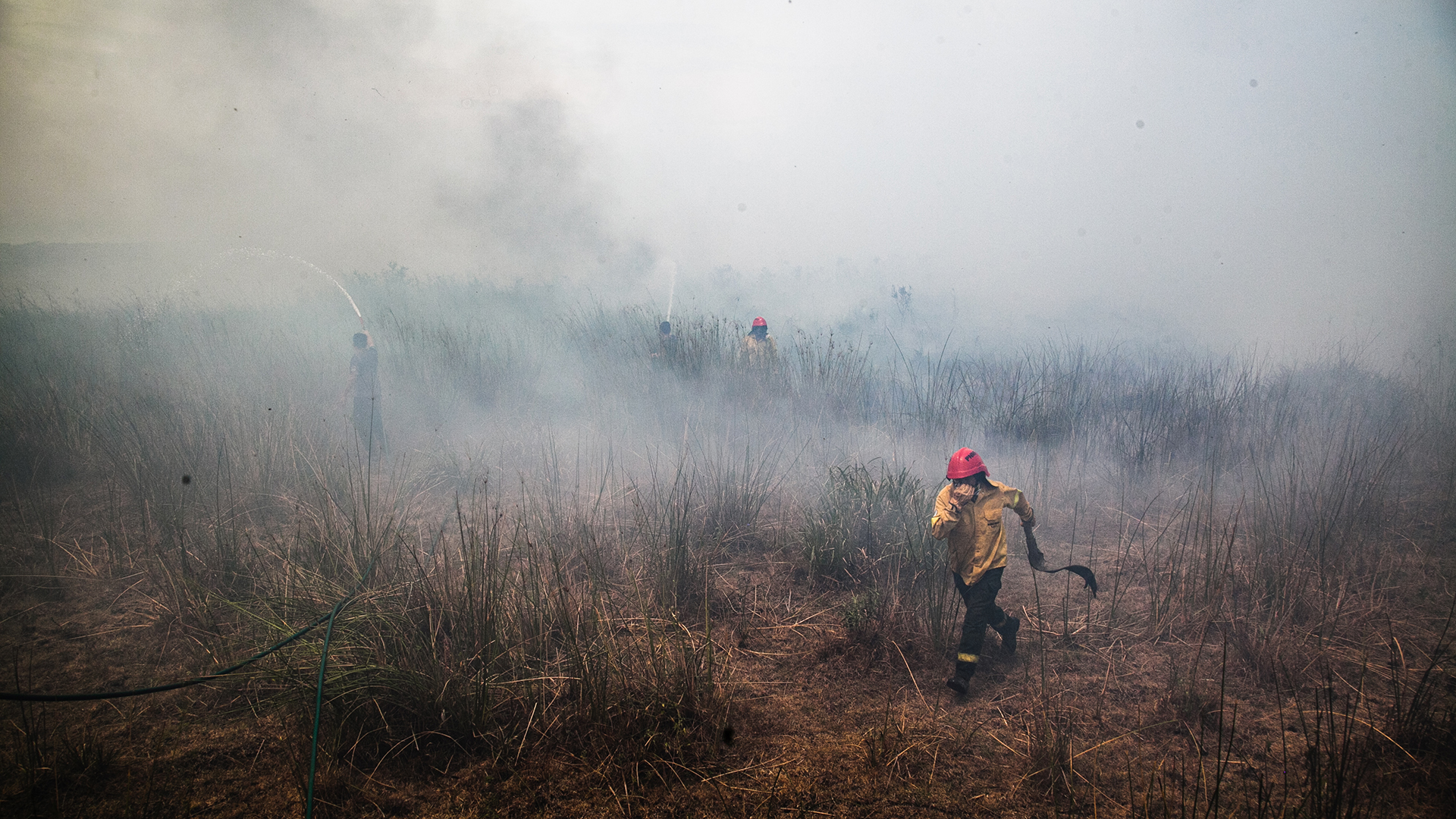Humanity faces 'grave and mounting threat' of climate change — unless we act, IPCC report reveals
More than 270 climate experts authored the UN's IPCC assessment.

From food insecurity to our physical and mental health, the impact of climate change is affecting people around the world, and the window is rapidly closing for us to prevent catastrophic and irreversible consequences, according to a new report by the Intergovernmental Panel on Climate Change (IPCC), which evaluates climate science for the United Nations.
Written by 270 scientists representing 67 countries, this installment of the IPCC's Sixth Assessment Report is the second of three parts, with the first report published in August 2021 and the third anticipated in April. The new assessment was released on Monday (Feb. 28) and IPCC representatives outlined at a virtual press event how climate change is hitting billions of people where we live.
Overall, an estimated 3.3 billion to 3.6 billion people inhabit regions that are considered "highly vulnerable to climate change," according to the report. However, the impacts of global warming are unequally distributed, and those who are most vulnerable to climate change are often cut off from resources that could help them to adapt or mitigate risk.
Related: The reality of climate change: 10 myths busted
"Today's IPCC report is an atlas of human suffering and a damning indictment of failed climate leadership," António Manuel de Oliveira Guterres, Secretary-General of the United Nations, said at the briefing. Evidence in the report from more than 34,000 scientific sources shows how extreme storms, droughts, floods, heatwaves and wildfires — all of which have been increasing in severity and frequency due to climate change — are disrupting food production, interfering with fishing and aquaculture; causing costly damage to cities and infrastructure; and eroding human health.
What's more, that disruption will only worsen the longer we put off taking necessary steps to limit warming to 2.7 degrees Fahrenheit (1.5 degrees Celsius) and help the hardest-hit parts of the world adapt to change that has already happened, Hoesung Lee, Chair of the IPCC, said in a statement.
"This report is a dire warning about the consequences of inaction," Lee said. "It shows that climate change is a grave and mounting threat to our well-being and a healthy planet."
Get the world’s most fascinating discoveries delivered straight to your inbox.
Limiting warming to 2.7 F, would require slashing greenhouse gas emissions globally by 40% and achieving net zero emissions by 2050; instead, the world is on track for emissions to rise an estimated 14% over the coming decade, Guterres said at the briefing.
"That spells catastrophe. It will destroy any chance of keeping 1.5 [C] alive," he said.
According to the report, food and water insecurity are on the rise and are affecting millions of people globally, "especially in Africa, Asia, Central and South America, on small islands and in the Arctic," caused by cascading impacts from weather extremes caused by climate change, such as heat, drought and floods. On average, global agricultural growth has slowed over the past 50 years as Earth warms, with most of the negative impacts occurring in midlatitude and low latitude regions, the authors wrote.
With extreme heat events increasing around the world, there are more annual deaths from heatwaves and from respiratory complications linked to already-elevated air pollution. Climate-related food-borne and water-borne diseases spread more widely and more rapidly, as do vector-borne illnesses and zoonotic diseases driven by range expansion for the organisms that carry harmful pathogens, according to the report.
Data from North America shows that climate change harms mental health, too. People who have lost their homes, livelihoods or loved ones in floods and wildfires may be affected by post-traumatic stress disorder, while other impacts of climate change, such as food insecurity, can likewise affect mental wellbeing, report co-author Sherilee Harper, an associate professor in the School of Public Health at the University of Alberta in Canada, said at the Feb. 27 briefing. Watching news stories or reading about the damage caused by climate change — and worrying about what's to come — can also negatively impact mental health, even when the person following the news hasn't experienced destructive climate change firsthand, Harper said.
Can we adapt?
The good news is that humans are an adaptable species, and people can adjust to life in a warming world; in fact, "growing public and political awareness of climate impacts and risks has resulted in at least 170 countries and many cities including adaptation in their climate policies and planning processes," the authors wrote. But those strategies can vary widely depending on location, and may be greatly constrained by inequity and poverty, according to the report.
One of the key findings by the IPCC is that many viable adaptation options rely on natural ecosystems, such as wetlands and inland rivers that help mitigate flooding from rising sea levels in coastal areas, said IPCC report co-author Camille Parmesan, the National Marine Aquarium Chair in Public Understanding of Oceans and Human Health at the University of Plymouth’s Marine Institute, in the United Kingdom.
"We have more evidence now of that dependency, and that a lot of the adaptation options involve some level of restoring and protecting natural ecosystems, and developing society in ways which are more coupled into a matrix of a natural landscape," Parmesan said at the Feb. 27 briefing.
However, many natural ecosystems are already nearing collapse due to stresses from global warming, and mounting evidence shows that our adaptation options will decline sharply as natural systems fail. Earth has already warmed to nearly 2.0 F (1.09 C) above pre-industrial average temperatures, and the impact on diverse ecosystems is far more negative and widespread than prior reports anticipated, Parmesan said.
Some of the changes outlined in the new report were unexpected at 2.0 F of warming, such as diseases emerging in North American forests, the first extinctions of species due to climate change, and mass mortality events in trees and mammals due to heatwaves and drought. With increased insect pest outbreaks, more tree deaths and wildfires, and the loss of permafrost and the drying of peatlands, Earth's biosphere is becoming less capable of absorbing greenhouse gases that are emitted by humans. Regions that were once reliable carbon sinks — absorbing atmospheric carbon dioxide (CO2) — such as old-growth Amazon rainforests and permafrost expanses in undisturbed areas North America and Siberia, are in some areas transforming to CO2 factories that produce more carbon than they absorb, according to the report.
And as these changes are already underway with present warming levels, reversing these processes will likely be more difficult than models predicted should warming climb past the target of 2.7 F, Parmesan added.
Because adapting to a warming world — and capping warming at 2.7 F — will require global cooperation and significant investments from the world's nations, the challenge can seem overwhelming on a personal level. However, even seemingly small actions can help to shape change across communities and will help us adapt as Earth warms, report co-author Kristie Ebi, a professor in the Department of Global Health at the University of Washington in Seattle, told Live Science in an email.
"There are lots of actions individuals can take separate from governments — checking on older adults and other vulnerable populations during heatwaves is one of many examples," Ebi said. "Further, there are thousands of NGOs [nongovernmental organizations] across the U.S., many of which are working on issues related to adaptation and sustainability, including vulnerability reduction. Engaging with local NGOs on topics of interest is an excellent opportunity for moving adaptation forward," she said.
Indeed, the IPCC report indicates that a "whole of society response" — one that includes individuals, communities and governments — will be essential if we are to succeed in reducing fossil fuel reliance, limiting global warming and adapting to climate change challenges, said report co-author and IPCC co-chair Debra Roberts, head of the Sustainable and Resilient City Initiatives Unit in eThekwini Municipality in Durban, South Africa.
"We all need to opt into the solution," Roberts said at the Monday press event. "How we use our sense of agency in the world, how we engage with governance processes, how we engage with leadership in our communities, the kind of priorities we express about the kind of world we want to see, which will influence policies — all of this is critical. The individual can play a vital role."
Originally published on Live Science.

Mindy Weisberger is a science journalist and author of "Rise of the Zombie Bugs: The Surprising Science of Parasitic Mind-Control" (Hopkins Press). She formerly edited for Scholastic and was a channel editor and senior writer for Live Science. She has reported on general science, covering climate change, paleontology, biology and space. Mindy studied film at Columbia University; prior to LS, she produced, wrote and directed media for the American Museum of Natural History in NYC. Her videos about dinosaurs, astrophysics, biodiversity and evolution appear in museums and science centers worldwide, earning awards such as the CINE Golden Eagle and the Communicator Award of Excellence. Her writing has also appeared in Scientific American, The Washington Post, How It Works Magazine and CNN.
 Live Science Plus
Live Science Plus







